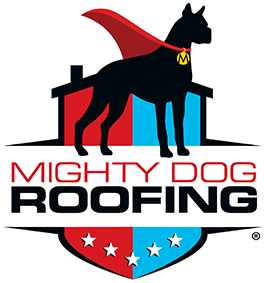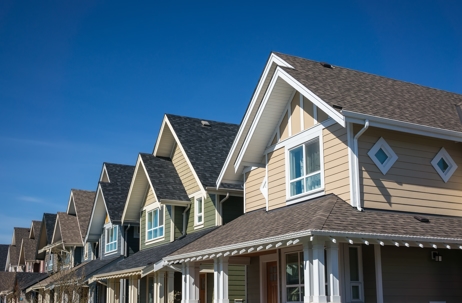The roofing industry is evolving rapidly, with new materials, technologies, and sustainability initiatives transforming the way homeowners protect and enhance their properties. As Connecticut experiences varied weather conditions, from harsh winters to humid summers, staying ahead of the latest roofing advancements can help homeowners make informed decisions.
In this blog, we’ll explore the latest roofing innovations and technologies, how smart roofs are changing the industry, and sustainable roofing trends for 2025.
The Latest Roofing Innovations and Technologies
Roofing technology is advancing to provide better protection, energy efficiency, and durability. Here are some of the most exciting developments making an impact in 2025:
1. Solar-Integrated Roofing
Traditional solar panels have been around for years, but now solar-integrated roofing is taking center stage. Companies like Tesla and GAF Energy are producing solar shingles, which blend seamlessly with traditional roofing materials while generating renewable energy. These innovations allow Connecticut homeowners to harness solar power without bulky panels.
2. Cool Roof Technology
Cool roofs are designed to reflect more sunlight and absorb less heat, reducing energy costs in the summer. Materials like cool roof coatings, reflective asphalt shingles, and metal roofing with reflective finishes help regulate indoor temperatures, making homes more energy-efficient year-round.
3. Impact-Resistant Roofing
With unpredictable storms and the risk of hail damage, many Connecticut homeowners are investing in impact-resistant roofing materials. Class 4 shingles, metal roofing, and synthetic slate tiles are built to withstand extreme weather conditions, offering greater durability and longevity.
4. Self-Healing Roofs
One of the most fascinating advancements in roofing technology is the self-healing roof. Some modern shingles now contain special polymers that expand when exposed to heat, sealing small cracks and preventing leaks. This innovation can extend the lifespan of a roof and reduce maintenance needs.
5. AI and Drone Roof Inspections
Artificial intelligence (AI) and drones are revolutionizing the way roofs are inspected. Many roofing contractors now use drone technology to conduct aerial inspections, providing high-resolution images and detecting damage without requiring anyone to climb onto the roof. AI-powered software can analyze these images to identify issues before they become costly problems.
How Smart Roofs Are Changing the Industry
Smart technology is no longer limited to home security and lighting—it’s also making its way into roofing systems. Smart roofs incorporate advanced features that improve functionality, efficiency, and homeowner convenience.
1. Smart Roof Monitoring Systems
Many homeowners now use roof monitoring sensors to detect leaks, temperature changes, and structural weaknesses in real time. These sensors send alerts to a smartphone or home automation system, allowing homeowners to address issues before they cause significant damage.
2. Automated Snow and Ice Removal
Connecticut winters can lead to ice dams and heavy snow accumulation, which can damage roofs. Smart roofs equipped with heating elements or self-regulating thermal cables can automatically melt snow and ice, preventing buildup and reducing the risk of leaks.
3. Energy-Efficient Smart Shingles
Some roofing materials now come with built-in smart insulation layers that adjust based on weather conditions. These materials help regulate indoor temperatures by reducing heat loss in the winter and heat gain in the summer, improving home comfort and lowering energy bills.
4. Rainwater Collection Integration
Smart roofs are also incorporating rainwater harvesting systems that collect and filter rainwater for irrigation, plumbing, or other household uses. This sustainable feature is particularly beneficial for environmentally conscious homeowners looking to reduce water waste.
Sustainable Roofing Trends for 2025
With a growing focus on environmental responsibility, sustainable roofing is one of the biggest trends shaping the industry. Connecticut homeowners are increasingly seeking eco-friendly options that offer durability and energy savings while reducing their carbon footprint.
1. Recycled and Eco-Friendly Materials
Many new roofing materials are being developed using recycled content, such as reclaimed metal, rubber, or composite shingles made from post-consumer waste. These materials provide the same level of protection as traditional options but are far more sustainable.
2. Living Green Roofs
Green roofs—roofs covered with vegetation—are becoming more popular in urban and suburban areas. They provide natural insulation, reduce stormwater runoff, and improve air quality. While more common on commercial buildings, some Connecticut homeowners are exploring residential green roof options for improved energy efficiency and aesthetics.
3. Longer-Lasting Materials for Less Waste
One of the most significant sustainability challenges in roofing is material waste. Manufacturers are now producing longer-lasting materials, such as composite slate or metal roofing, which can last 50 years or more compared to traditional asphalt shingles that need replacement every 20–30 years. These longer lifespans reduce waste and minimize the environmental impact of frequent re-roofing.
4. Energy Star-Certified Roofing
Energy Star-certified roofing products help reflect heat and improve a home’s energy efficiency. Connecticut homeowners looking for sustainable options should consider cool roofs, white roofing membranes, or reflective coatings, which reduce energy consumption and lower cooling costs in the summer.
5. Solar-Ready Roofing Systems
With solar energy becoming more accessible, many homeowners are opting for solar-ready roofing systems—roofs specifically designed to support the future installation of solar panels or solar shingles. These systems make it easier to integrate renewable energy solutions without requiring major roof modifications.
Final Thoughts
The roofing industry trends for Connecticut homes in 2025 emphasize innovation, sustainability, and smart technology. Homeowners now have more options than ever before to enhance energy efficiency, reduce maintenance, and adopt environmentally friendly solutions.
Whether you’re considering solar-integrated shingles, smart roof sensors, or impact-resistant materials, staying informed about these trends can help you make the best decision for your home. As roofing technology continues to evolve, Connecticut homeowners can look forward to safer, more efficient, and longer-lasting roofs that meet the demands of modern living.


